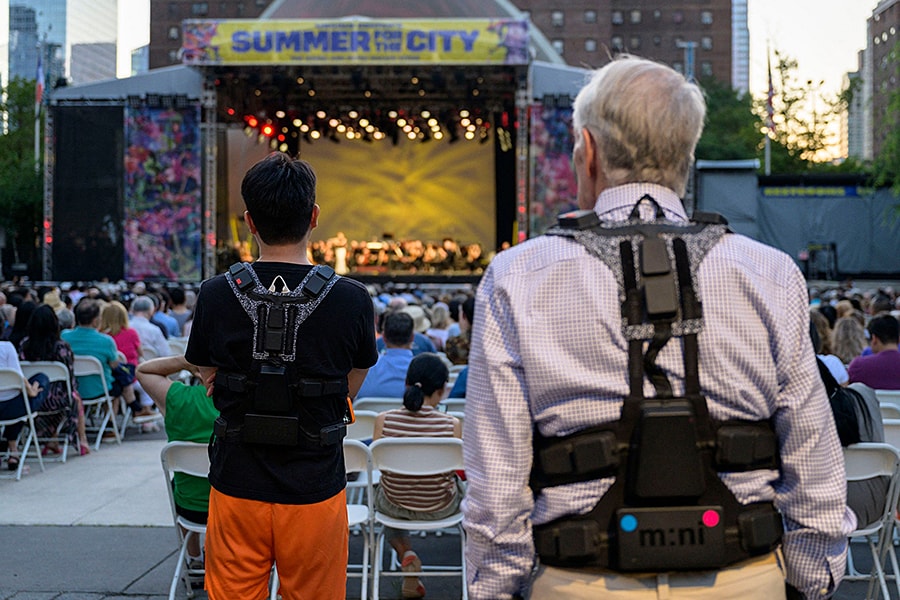
Vibrating vests translate music for deaf concertgoers
At a recent classical concert at Manhattan's Lincoln Center, audience members had the chance to try on the wireless vests, featuring 24 points of vibration translating the music onstage
 The aim of the vests—along with bands at the wrists or ankles—is to allow for a full-body experience, creating sensations that render the feelings music can evoke. Image: Angela Weiss / AFP
The aim of the vests—along with bands at the wrists or ankles—is to allow for a full-body experience, creating sensations that render the feelings music can evoke. Image: Angela Weiss / AFP
The violins reverberate in the ribcage, while cello and bass are felt a little further down, with horns in the shoulders and, more often than not, soloists in the wrists.
That's one way audio expert Patrick Hanlon programs haptic suits, designed to enable concertgoers who are deaf or hard of hearing to experience orchestral music, as initiatives to improve inclusivity at live music performances break new ground.
At a recent classical concert at Manhattan's Lincoln Center, audience members had the chance to try on the wireless vests, featuring 24 points of vibration translating the music onstage.
"It engages the body," Hanlon told AFP prior to the show, giving attendees a "3D-surround experience through vibrations."
Hanlon is a co-founder of Music: Not Impossible, an arm of Not Impossible Labs, which employs tech to try to alleviate social barriers, including those around disability.







